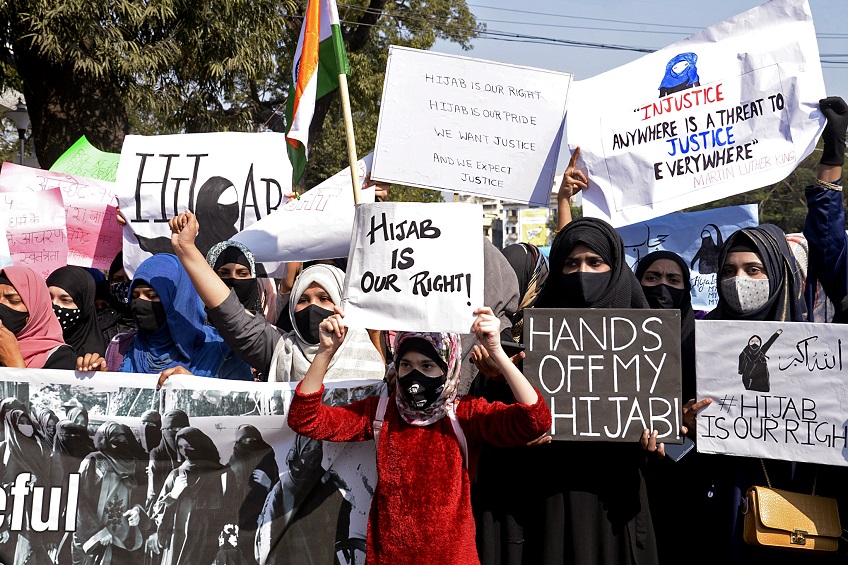Multiple accounts have emerged about the origins and motivations of the actions of a few of the girl students in a Karnataka college. Allegations have been made linking them to an organisation in which those with Talibanesque views of society proliferate. If guided from outside, it is likely that the students initially involved may have been told by their mentors that it was necessary to wear a hijab if they were to be true to their faith. This when the Muslim faith is explicit that only the Word of God that is contained in the Quran contains what is essentials in a faith that has 1.5 billion adherents across the world, including nearly 200 million in India. The Quran correctly enjoins women to wear attire that is modest, while making clear that the ambit of such terms would hinge on the times. But in an era when change is taking place at an accelerating pace, to seek a return to modes that were the norm centuries ago may not be the best way of becoming winners. Afghanistan run by the Taliban has yet to distinguish itself as a repository of knowledge and innovation, nor is it likely to, despite the personal qualities of so many Afghans. The Muslims of India are overwhelmingly moderate, and working hard at ensuring that they meet with success the challenges of the age they live in. A few nasty memes were floated about the daughters of a few Bollywood stars from the Muslim faith, for their being dressed not in hijab or the burka. Their parents need to be appreciated for the freedom they give their daughters. Across faiths, Prime Minister Narendra Modi’s appeal to give equal attention and education to the girl child has yet to become universal practice in India. Another approach towards parenting are the parents who warn that a daughter or a daughter-in-law not wearing the burka would result in the entire family going to hell in the afterlife. To arrogate to any human being, knowledge of the manner in which human beings are judged by the Divine Creator in the afterlife goes against the tenets of the faith they profess to champion in their narrow-mindedness. That selection process is known only to the Divine Creator. Dress need not reflect the inner quality of an individual, although it often indicates differences in income. The hijab (headscarf), the niqab (full face covering) and the burka had their origins more than 2,000 years ago, and may therefore not be regarded as intrinsic to the Muslim faith. Having said this, even were the hijab-wearing students in that educational institution coached by members of a radical group that such attire is unavoidable in the noble faith they belong to, banning the hijab was still a disproportionate reaction. Doing so has played into the hands of radical organisations intensifying efforts to portray India as a country where the minorities are unsafe. There are indeed such countries, but not in a country that has 230 million minorities among its citizens. Had caution been exercised and the wearing of hijabs been permitted, the next move of the radical organisations presumed to be involved in the imbroglio would have been to persuade the girls to wear a burka. Once the burka was reached, a ban could have been instituted that would have gained the support of over 90% of women cutting across communities, who are not comfortable with the manner in which some men use reasons of faith to dictate certain dress codes. The agenda of the radical groups would have been exposed, and wide support gained for the ban on students wearing the burka. With the hijab ban, many more Muslim students are now wearing a hijab, in protest. In any community, it is important during the process of socialisation that students of all communities study together in class. Should those girls who insist on wearing a hijab be denied entry, their only option would be to go to schools that cater only to students of a particular faith. This would not be optimal for their education, or to the country as a whole. Muslim women who have been educated in institutions that have students from multiple faiths are distinguishing themselves by excellent work that is beneficial to the country. Creating a situation in which many such students have to go to schools with more restricted curricula or student intake would not be an option better than being educated in institutions that have no restrictions on student intake. The Sino-Wahhabi alliance is seeking to portray India as a country where intolerance and discrimination are rife. The hijab ban has played into this toxic international narrative. The removal of Article 370 ensured that the Two Nation theory no longer continued its sway in a particular state of our country. The banning of triple talaq was another welcome step, as would be the introduction of a Uniform Civil Code (UCC). Muslim women and most men welcomed the abolition of Triple Talaq, and are likely to react in a similar fashion to a UCC. These are issues of significance in a manner that the wearing of a headscarf cannot be. Across the world, a non-issue has moved to the centre stage, and in a manner not advantageous to India, or to the modernising state of Karnataka, as an investment destination. An avoidable controversy. MDN

